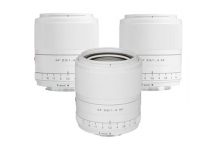Coming back from holidays we all got back to our desks, but some of you may come to an unfortunate and bitter realization that it’s time to upgrade your laptop. That was the moment the dam broke and those of you in that situation got flooded by a plethora of possibilities: Windows or Mac, heavy or light, more CPU cores or more powerful GPU, the list of choices and possibilities goes on and on.
The first step in choosing your new laptop will be to evaluate your needs and understand what kind of laptop user are you. And that’s what Jordy from Cinecom.net has done by putting together this insightful guide on the topic below.
Each and every one of us has a different workflow and a different setup he usually works in. Some of us are what we could call travel editors. From the Serengeti to the Himalayas any rock can be a desk, and it’s always time to edit that amazing shot.
Then there are the location editors.These are the guys always on the move, cutting dailies and reviewing projects with clients, but usually in an office or a cafè.
Finally, we have the studio editors. Those who are looking for a laptop, but actually as a desktop replacement that sometimes may be brought outside of the studio. The suggested LG Gram will be perfect only for one of these categories, can you guess which one? If you don’t fit in that description, though, hold on until the end, there are a couple of suggestions for you as well.
If you are one of the traveling editors, you’ll surely appreciate the lightness and portability of the LG Gram, one of the lighter laptops on the market. If you get the chance to try it in person, you won’t believe its real. You may even think that you’re holding an empty decoy, a mockup made to show the actual footprint.
Well, it’s definitely real. But do not be fooled by the weight of the thing. Inside we have an i7 processor, a 6-core chip with a lower base clock of 2.8Ghz but a respectable 4.3 GHz Turbo boost. Odds are you’ll also appreciate the wonderful IPS display with 2560 x 1600 native resolution, a nice screen that’s very useful for those who can’t bring a wide calibrated monitor in the jungle with them.
More than that, the battery of the LG Gram is rated for 19 hours of work. Now, clearly, we’re not talking about productivity hours here, meaning that in Premiere Pro you’ll get much, much less of a lifespan, but still.
As a location editor, you will also benefit from those six cores under the hood. The base clock of 1.8Ghz allows for great energy efficiency, while the power released in the turbo boost is more than enough for any kind of editing task, applying multiple complex effects included.
Now that we’ve talked about the screen, battery, and CPU, what’s left? Well, there are two more pieces worth mentioning – RAM and GPU. As a rule of thumb, the minimal specs in terms of RAM that can be deemed acceptable for a video editing machine in 2019 are 16GB.
The best would be 32GB and for an over the top configuration good not only for video editing but also for compositing and 3D work, you should aim at 64GB. It’s also paramount to have a modern bus, like DDR4 rather than older DDR3.
How about the GPU? You may be surprised to know that actual video editing is a processor-intensive task and that the GPU is important only when rendering effects. Now this LG Gram does not have what we call a discrete GPU. Is that a deal-breaker? It could be, depending on your workflow.
If you need only to cut and apply some basic effects, it will still be ok. Unfortunately, balancing between power and portability is not easy, so to get such a lightweight laptop, LG had to compromise on performance. If you need to have a smoother experience or if you predominantly edit heavily compressed codecs or high-resolution clips, you could try and bridge the gap in performance with a proxy-based workflow.
Other than that, the outer shell of the LG Gram is made of solid aluminum and carbon, and that makes it as strong as a tank. We would not throw it away as Jordy suggests, but it’s indeed resistant.
On the case, we can find a Thunderbolt port, a must-have for any editor in 2019. The high bandwidth of the interface allows covering many different outputs, data, video, power, and dongles. The swiss knife of ports is a must-have in the post-touch bar dongle-world we live in.
But for those that are less on the move? There are a couple of suggestions left. Location editors will prefer a laptop with a nice widescreen. Having always AC power, you won’t be so focused on battery life. Instead, you can go for a slightly larger and higher performance laptop, like the medium tier laptops in MSI lineup.
Finally if instead, you are a desktop replacement editor, then you can go all-in on power, you leave behind battery, portability and almost everything important for the previous two categories, and instead, you could go for a nice footage eating monster like the many bulky gaming laptops you can find on the market. They have multicore CPUs, beefy GPUs, and can chomp through any kind of footage with ease.
[source: Cinecom.net]
Order Links:
Disclaimer: As an Amazon Associate partner and participant in B&H and Adorama Affiliate programmes, we earn a small comission from each purchase made through the affiliate links listed above at no additional cost to you.


